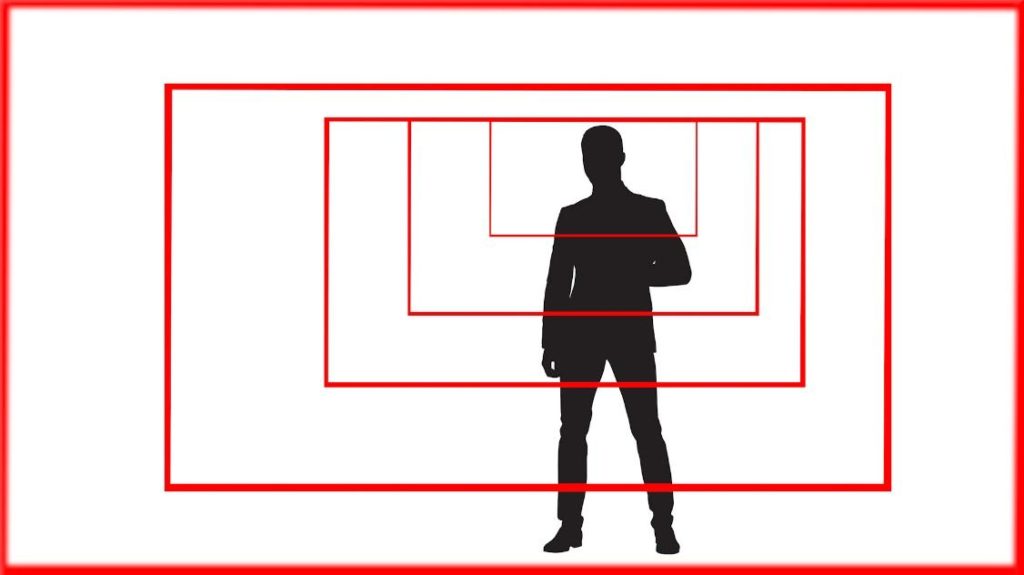Napoleon Dynamite, The Blair Witch Project, and Paranormal Activity: Not only some of the most anxiety inducing movies ever made, they’re also three of the top 10 most profitable.
Napoleon pulled in $46 million on a $400,000 budget, Blair Witch made $248 million on a $60,000 budget, and the all-time winner Paranormal Activity—made by a married couple using actual home security cameras and consumer grade camcorders—resulted in a supernatural profit margin of 1,300,000%, earning an eye-popping $193 million on a $16,000 budget.
Other than a few tasty nuggets of trivia to impress your cinephile friends, why am I telling you this? Well it seems like a lot of businesses are interested in “scrappy” production, which I can only assume means low budget videos with a high budget impact.
Disclaimer: I work for Revenue River, a professional videography team, where we wholeheartedly believe that the right equipment is a necessary investment when you can afford it and can put in the time needed to learn how to use it.
That said, until you get there, you already have a camera that’s capable of creating excellent video content—if you know what you’re doing. It’s time to learn mobile videography so you can shoot killer low budget videos on your phone.

Discover the Top Video Trends for 2020
 Get the insights you need to craft a winning video strategy. Read the 2020 Video Trends Report.
Get the insights you need to craft a winning video strategy. Read the 2020 Video Trends Report.
Get the Report
How to Make Low Budget Videos That Don’t Look Low Budget
1. Understand Your Focal Length to Flatter Subjects
Here’s what you need to know about focal lengths: They change how we perceive perspective in an effect we call optical distortion. Lenses 35mm and below exaggerate perspective, making closer objects seem bigger and objects in the background seem smaller or father away. Lenses tighter than 35mm compress perspective, making the distance between foreground, subject, and background seem smaller.
The human eye is a fascinating lens. Most adults see the world at a 35mm equivalent, but for toddlers, it’s about a 21mm equivalent. Have you ever visited a place you used to go as a child and thought “Wow this room seemed so much bigger back then?” Now, technically you were a smaller person then, so in a spatially relative sense, the room was bigger. But your brain also photographed that room with a wider lens, so your mental picture of it actually makes it seem even larger than spatial relativity alone would explain.
As fascinating as that is, the most important thing to understand about optical distortion is what it does to the human face.
Most smartphones have wide-angle lenses, which exaggerate perspectives. That means the closest thing to the camera, your nose, will appear larger. The rest of your head will appear smaller to accentuate the distortion. From a low angle (the most common for video calls) your neck or chin will become disproportionately large compared to your head.
Smartphone manufacturers have finally caught on to this and have begun to add 50mm “telephoto” lenses, but any iPhone before X has a single 28mm lens. Device manufacturers have tried to compensate for optical distortion using software that resizes facial features, but have been thoroughly scrutinized when it malfunctions.
That said, all is not lost if you’re using an older device. The effects of wide-angle distortion are less severe the further the subject is from the camera. An easy way for your subject to look their best is to simply move the camera further away and zoom in to minimize the distortion. But don’t get carried away, move back five to eight feet and pinch-zoom in by 20 to 30% max. If you zoom more than that, you’re going to start to see pixelation.
2. Wrangle the Angle
This one is pretty simple. The further away your camera is from your subject, the lower the lens can be. You should almost never go higher than your subject’s eye level, and almost never shoot someone’s side profile from more than 90 degrees; if your subject’s nose is 12 o’clock, don’t go past 3 o’clock or 9.
3. “Level” Up Your Shots By Leveling Them Out
The number one mistake made by amateur photographers and videographers is not nailing the horizon line, meaning their shot is slightly tilted.
It’s amazing how far this goes in creating a more professional-looking shot. It’s not that easy to do as it may sound, though.
If you’ve got an iPhone, pull it out now and launch the Level app. Odds are what you think is level is just a little tilted.
There are a variety of sub-$500 phone gimbals on the market that automatically correct this (we like the DJI Osmo Mobile 3 Gimbal), but if you’re on a super tight budget, there are other options. One super easy fix is to enable gridlines on your photo/video preview screen. This makes it a lot easier to know whether you’ve nailed it or not. You can also use an inexpensive tripod or find a straight edge to lean on like the top of a coffee mug or computer monitor.
4. Frame Your Shots Up for Success
Framing is the subject of much debate amongst a lot of misinformed videographers; The internet is full of people that will help you screw this up while citing the “rule of thirds,” so here are some go-to rules to follow.
First off, nothing other than a video call or Stories-format social video (for Instagram, Snapchat, or similar) should be shot in portrait orientation. By far the most annoying habit of mobile videographers is keeping the phone vertical. Bear in mind that you have to press record after you turn your phone, otherwise your phone will record a portrait-oriented video that happens to turn on its side, forcing your audience to tilt their heads.
If you’re taking a wide shot that has more vertical space than your entire subject, that subject should be towards the bottom of the shot. We should see more sky above the cityscape than ground below. We should be more likely to see the chandelier above the dancer than the hardwood below.
Moving inward, If your whole subject doesn’t fit in the shot, you need to be mindful of where to crop. A good rule of thumb is never to crop on a joint and always keep just a little space above their head.
Hot Tip: The Visual Guide to Framing
The graphic below shows ideal crop points that’ll help you ensure that your subject doesn’t end up looking awkward.

5. Tap into Sharper Subjects
Your phone is pretty good about knowing what to focus on and expose for, but you should always tap your subject on the screen. If you tap and hold to focus lock, your phone will continue to focus and expose for the spot that you indicated. Remember: If your subject moves, your focus and exposure will change.
6. Know How to Share on Social Media
Social media is the bane of many videographers’ existence. There’s nothing worse than seeing the film you’ve so thoughtfully crafted get downscaled once it’s online.
This is mostly due to compression and limited bit rates. Think of bits, the tiny pieces of code that your computer uses to generate video frames, as cars on a highway, and the bit rate as the number of lanes. Most phones shoot 1080p video between 12 and 32 MBPS (12 to 32 million little cars per second).
Instagram and Facebook both only playback video at 4 MBPS, meaning only a fraction of the information included in the original video file is still there once you upload it. Bottom-line, until they upgrade this, your photos and videos will always lose quality when you put them on social media (no matter how you shoot them).
Facebook allows you to embed a link, so you can use a third-party host like Vidyard to stream your video. This allows you to preserve a higher bitrate and avoid Facebook’s sloppy compression.
Put Your Videos to Work
Create, host, manage, and share your videos.
Unfortunately, that’s not an option on Instagram (a platform my team loves), but there are a couple of workarounds:
If you have access to Adobe Premiere or Media Encoder, you can precompress your video’s bit rate to 4 mbps and lower the resolution to 720p before posting it to Instagram. This may seem counterintuitive, but Adobe will do a much better job compressing the video than Instagram will.
If your video wasn’t meant to be a square, make sure you use the resize button before you post. By default, Instagram will simply crop a square out of your video and zoom in. the combination of the compression and digital zoom can make it look like you shot your video on a Motorola RAZR in 2002.
One more important detail for Instagram: If your video is longer than a minute, you’ll have to use the IGTV feature.
No matter where you share your video, make sure you choose a cover that you like. Streaming platforms will choose one for you by default, and it can be pretty random.
7. Have Fun with It
As cheesy as it sounds, the most important advice I can give you for making low budget videos is to have fun with it.
Maybe your camera movement is a little sloppy or you don’t totally nail your composition. Human error can add authenticity to your videos and actually connect you with your audience in a personal way. Don’t be too hard on yourself.
In the words of Napoleon Dynamite, “I don’t even have any skills.”
By doing your best and following these tips for mobile videography, you can maximize the quality of your video offerings. As your budget grows, you’ll end up with enough practice with the fundamentals to understand and capitalize on what the new tech can do.
The Revenue River team would love to see your mobile videography masterpieces! Drop us a line and show us your best scrappy videos.
Want more?Get the latest video news and tips
The post Low Budget Video: 7 Scrappy Tips For Mobile Videography appeared first on Vidyard.
Read more: vidyard.com









